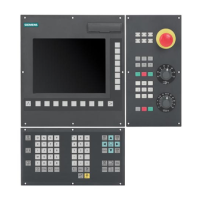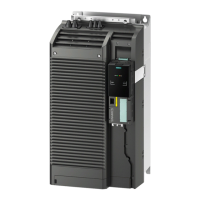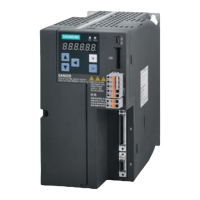Creating a G code program
6.7 Machining plane, milling direction, retraction plane, safe clearance and feedrate (PL, RP, SC, F)
Turning
208 Operating Manual, 03/2013, 6FC5398-8CP40-3BA1
6.7 Machining plane, milling direction, retraction plane, safe clearance
and feedrate (PL, RP, SC, F)
In the program header, cycle input screens have general parameters that always repeat.
You will find the following parameters in every input screen for a cycle in a G code program.
Parameter Description Unit
PL
Each input screen has a selection box for the planes, if the planes have not been
specified by NC machine data.
Machining plane:
• G17 (XY)
• G18 (ZX)
• G19 (YZ)
Milling direction
- only for
milling
When machining a pocket, a longitudinal slot or a spigot, the machining direction
(climbing or conventional) and the spindle direction are taken into account in the tool
list. The pocket is then machined in a clockwise or counterclockwise direction.
During path milling, the programmed contour direction determines the machining
direction.
RP Retraction plane (abs)
During machining the tool traverses in rapid traverse from the tool change point to the
return plane and then to the safety clearance. The machining feedrate is activated at
this level. When the machining operation is finished, the tool traverses at the machining
feedrate away from the workpiece to the safety clearance level. It traverses from the
safety clearance to the retraction plane and then to the tool change point in rapid
traverse.
The retraction plane is entered as an absolute value.
Normally, reference point Z0 and retraction plane RP have different values. The cycle
assumes that the retraction plane is in front of the reference point.
mm
SC
Safety clearance (inc)
Acts in relation to the reference point. The direction in which the safety clearance is
active is automatically determined by the cycle.
The safety clearance must be entered as an incremental value (without sign).
mm
F Feedrate
The feedrate F (also referred to as the machining feedrate) specifies the speed at which
the axes move when machining the workpiece. The unit of the feedrate (mm/min,
mm/rev, mm/tooth etc. ) always refers to the feedrate type programmed before the cycle
call.
The maximum feedrate is determined via machine data.

